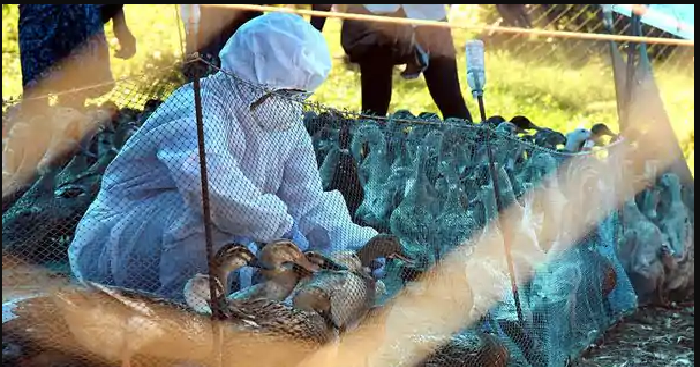BIRD FLU IN INDIA: CAN I EAT EGGS AND CHICKEN?
Avian influenza or bird flu is a highly contagious viral disease caused by Influenza Type A viruses, which generally affects poultry birds such as chickens, ducks and turkeys. These viruses occur naturally among birds. Wild birds carry these viruses in their intestines, but they usually do not get sick from them. There are many strains of the virus; some of them are mild and may merely cause a dip in egg production or other mild symptoms among chickens, while others are severe and lethal. The type with the greatest risk is highly pathogenic avian influenza (HPAI).
India had notified the first outbreak of avian influenza in 2006. The current outbreak has been reported a few months after India declared the country free from the disease on September 30, 2020.
Symptoms
- cough
- diarrhea
- respiratory difficulties
- fever (over 100.4°F or 38°C)
- headache
- muscle aches
- malaise
- runny nose
- sore throat
Symptoms often progress to
- severe breathing problems
- organ failure
- sepsis
- pneumonia
- acute respiratory distress syndrome(ARDS).
Causes
H5N1 was the first avian influenza virus to infect humans. The first infection occurred in Hong Kong in 1997. A new strain of bird flu was identified in China in 2013. The influenza A virus is termed H7N9 (H7N9 Chinese bird flu). The outbreak was linked to handling infected poultry. H5N1 occurs naturally in wild waterfowl, but it can spread easily to domestic poultry. The disease is transmitted to humans through contact with infected bird feces, nasal secretions, or secretions from the mouth or eyes. Consuming properly cooked poultry or eggs from infected birds doesn’t transmit the bird flu, but eggs should never be served runny. Meat is considered safe if it has been cooked to an internal temperature of 165ºF (73.9ºC). The virus is destroyed at a temperature of 70 degrees Celsius for 30 minutes.
Risk Factors
Birds infected with H5N1 continue to release the virus in feces and saliva for as long as 10 days. Touching contaminated surfaces can spread the infection.You may have a greater risk of contracting H5N1 if you are:
- a poultry farmer
- a traveler visiting affected areas
- exposed to infected birds
- someone who eats undercooked poultry or eggs
- a healthcare worker caring for infected patients
- a household member of an infected person
Diagnosis
The virus can be detected in sputum by several methods, including culture or polymerase chain reaction (PCR). Cultures should be done in laboratories that have an appropriate biosafety certification. PCR detects nucleic acid from the influenza A virus.It can offer preliminary results in only four hours. However, the test isn’t widely available. Specialized PCR testing is available in reference laboratories to identify avian strains and can identify the specific type of virus (for example, H5N1 or H7N9).
Treatment
Veterinarians and poultry workers usually treat bird flu in commercial outbreaks. In rare human outbreaks, primary-care physicians, pediatricians, and emergency-medicine specialists may initially treat patients but individuals with severe complications may be treated by infectious-disease specialists, critical-care specialists, hospitalists, and pulmonologists.
In most cases, treatment with antiviral medication such as Oseltamivir (Tamiflu) or Zanamivir (Relenza) can help reduce the severity of the disease. However, the medication must be taken within 48 hours after symptoms first appear.
Your doctor may recommend you get a flu shot so that you don’t also get a human strain of influenza. If you develop both the avian flu and human flu at the same time, it could create a new and possibly deadly form of the flu.The flu vaccine is administered by injection in the arm. There’s also a nasal spray flu vaccine option for nonpregnant individuals between the ages of 2 and 49.
The FDA has approved a vaccine designed to protect against the avian flu, but the vaccine isn’t currently available to the public. Experts recommend that the vaccine be used if H5N1 begins to spread among people. This vaccine seems unlikely to offer protection against the new H7N9 bird flu .
Prevention
Culling is used in order to decrease the threat of avian influenza transmission by killing potentially infected birds. It has effectively limited the spread of bird flu in outbreak situations but has negative effects on the poultry and egg industry
Be sure to practice good hygiene , wash your hands regularly and to wear masks and protective gear for those handling infected poultry
For future avian influenza threats, the WHO suggests a 3 phase, 5 part plan.
- Phase: Pre-pandemic
- Reduce opportunities for human infection
- Strengthen the early warning system
- Phase: Emergence of a pandemic virus
- Contain or delay spread at the source
- Phase: Pandemic declared and spreading internationally
- Reduce morbidity, mortality, and social disruption
- Conduct research to guide response measures
Prognosis
The prognosis in human cases of bird flu remains poor. Many cases occur in people who are poor, live in rural areas in underdeveloped countries, and do not have access to modern intensive-care units or antiviral therapy. Approximately 55% of people diagnosed with H5N1 bird flu eventually die from the disease; the H7N9 strain has a similar death rate of about 37%. Individuals who survive may have long-term problems if organ systems are severely damaged.

